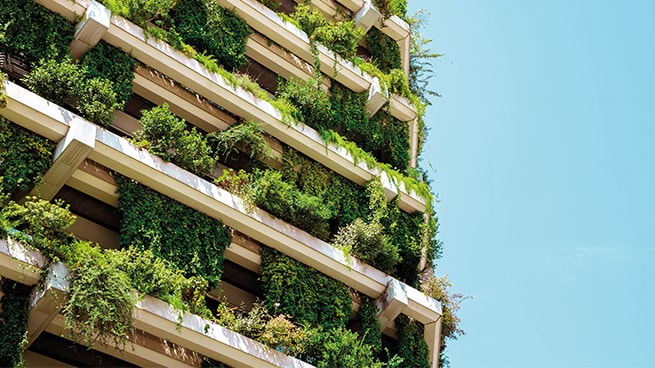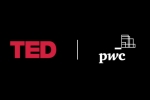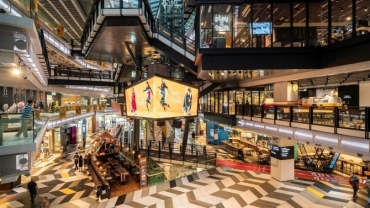
On the Road to Recovery
More than a year after the outbreak of COVID-19, real estate leaders are still coming to terms with the enormity of the immediate economic fallout from the pandemic and the far-reaching consequences for how people live, work and interact with the built environment.
As all the leaders canvassed for this Global edition of Emerging Trends testify, the catalytic effect of COVID-19 on a number of major trends such as working from home and online shopping has been the main narrative for the industry across the world. At the same time, the health crisis and the prolonged lockdowns are serving to question some of the received wisdom around the built environment. That being said, industry players are hopeful of a consumer-spending-led economic recovery feeding through into an uptick in real estate business in the second half of 2021. Indeed, China and other parts of Asia have already seen retail sales boosted in recent months by “revenge spending” — now part of the lexicon of COVID-19.
There is a broad acknowledgement that the unprecedented levels of fiscal and monetary stimulus supporting the global economy come with their own threats to market volatility. On balance, despite more volatile inflation expectations, the extraordinarily loose monetary environment is expected to keep interest rates low for the time being and accordingly making the yield spread for real estate over other asset classes hugely compelling to investors. By contrast, lenders are expected to adopt a far more cautious approach to real estate this year and next compared with equity investors — but also compared with their approach to the asset class during the first lockdowns of a year ago.
While the pace of economic recovery from the pandemic may vary from country to country, the interviews for the three regional Emerging Trends reports and for Global Emerging Trends reveal that the sector issues and preferences are remarkably similar across the world.
Logistics has been a startling sector success across all three regions, largely driven by surging e-commerce. Sustained investor demand is widely expected to fuel further cap rate compression this year, and that divides opinion. For some it evokes the asset bubble concerns in equity markets; for others it reflects a structural, long term change.
Residential is also in favour as a stable income provider but there are additional reasons. Industry players in the U.S. and Europe see investing in housing — social, affordable and private rented — as fulfilling a basic need in society and as such very much part of their ESG agenda. Interviewees in all three regions also see overwhelmingly favourable supply-demand dynamics, which make housing a prudent defensive play for the foreseeable future.
The outlook for the office sector is altogether more difficult to predict, given that sentiment here is influenced by such varied forces for change: the rise of working from home (WFH), the increasing concern for the health and wellbeing of employees and the eroded appeal of long commutes in big cities.
Top cities for real estate investment in 2021
US |
Europe |
Asia Pacific |
Raleigh/Durham |
Berlin |
Ho Chi Minh City |
Austin |
London |
Singapore |
Nashville |
Paris |
Shenzhen |
Dallas/Fort Worth |
Frankfurt |
Tokyo |
Charlotte |
Amsterdam |
Seoul |
Tampa/St. Petersburg |
Hamburg |
Osaka |
Salt Lake City |
Munich |
Sydney |
Washington D.C. |
Madrid |
Shanghai |
Boston |
Milan |
Guangzhou |
Long Island, N.Y. |
Vienna |
Taipei |
“The shape of things to come depends on harnessing the virus spread and the effectiveness of the policy response. Whilst we hope that we are though the worst, we’re not out of the woods yet.”

"For a long time, there was a lot of greenwashing, it was just words and people paying lip service. Now we are seeing action. The Paris Agreement has been a huge trigger."
Dealing with decarbonisation
“It’s moving quickly, and by the end of this year it will be an avalanche.”
This is how one investment manager describes the growing awareness across real estate that the industry must deal now with the impact of carbon emissions from the built environment.
The pandemic has massively reinforced the environmental, social and governance (ESG) agenda. A number of overarching market and regulatory forces are making decarbonisation a matter business cannot ignore, with a direct impact on the bottom line. As a result, more companies than ever before are putting in place strategies with decarbonisation at the heart of the way they do business - with almost all interviewees agreeing that there has been a dramatic increase in focus on decarbonisation in the real estate industry in the past 12-18 months.
Despite this increased focus, the interviews indicate a big knowledge gap - with vastly insufficient data being collected on how much energy buildings use during both construction and operation. There remains a daunting amount of complexity in the development, ownership and management of real estate, which makes coming up with an effective strategy difficult even for the largest companies. Executing the strategy is even more complex, requiring developers, owners, occupiers and all other stakeholders that make up the real estate value chain to work together with the same goals in mind.
That being said, the industry is working to surmount these issues. The effort to decarbonise and reduce emissions is increasingly seen as an investment in the future, for businesses as well as the planet. It is an inspirational act that will require companies, cities and governments to work together in a way never seen before, to solve the great challenge of this and perhaps any generation. That investment in the future is inherently an act of hope, and real estate is hopeful of playing its part.
The effort to decarbonise and reduce emissions is increasingly seen as an investment in the future, for businesses as well as the planet. — a far greater level of collaboration than the industry has seen before — to address the complexity of decarbonising the built environment.
Contact us




















